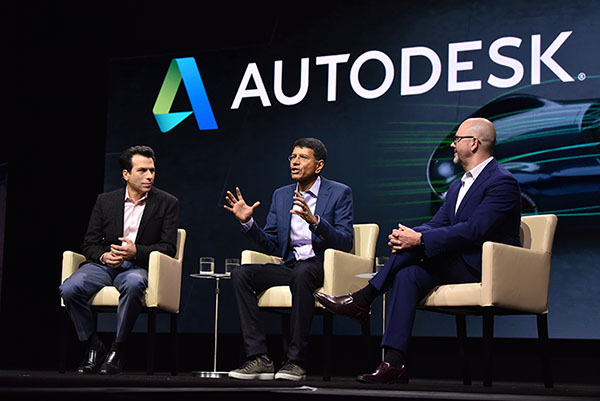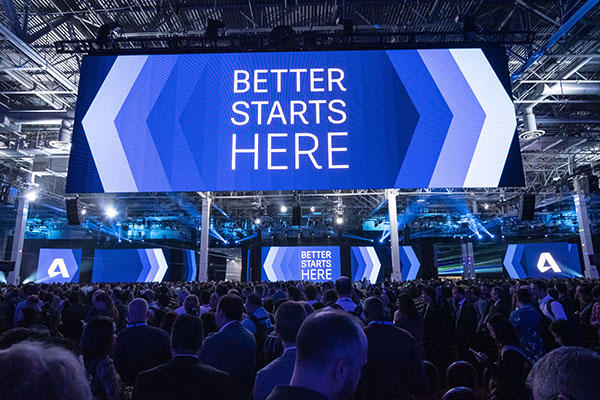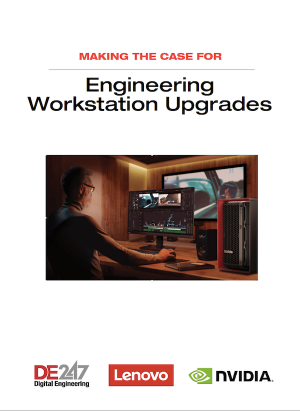Autodesk discusses partnership with ANSYS at AU 2019, offers free generative design tools, more
Autodesk and ANSYS affirm partnership, Autodesk offers free generative design tools, React Robotics design in Fusion with Lenovo workstations, more

Autodesk and ANSYS CEOs share the stage at Autodesk University 2019. Image courtesy of Autodesk.
Latest News
December 2, 2019
More details about the Autodesk-ANSYS partnership
The two biggest names in design and simulation—Autodesk and ANSYS—get closer, as a result of the partnership announced in September. The two reaffirm the collaborative roadmap two weeks ago, during the annual Autodesk University conference.
On Day Two, during the Product Design and Manufacturing keynote, Autodesk CEO Andrew Anagnost and ANSYS CEO Ajei Gopal took the stage together to talk about the partnership.
In the initial announcement, the two companies said they plan to make Autodesk automotive visualization program VRED work well with ANSYS’s physics based lighting simulation. During AU, the two announced there will be tighter integration between Autodesk Fusion 360 and ANSYS Mechanical.
The partnership is a boon for many engineering firms with workflows that span from design creation and visualization in Autodesk products, to running simulation in ANSYS products.
For more, read DE's AU 2019 report here.

Free Generative Design tools till end of the year
For those who want to explore generative design, Stephen Hooper, Autodesk’s VP and GM, Autodesk Fusion, has some good news.
“Free unlimited use of generative design till end of this year,” he said, during the Product Design and Manufacturing keynote.
One of the generative design users highlighted at the show is Airbus.
Manufacturers usually use AI-driven generative design to figure out the best lightweight geometry or lattice structures, but Airbus’s application is a departure from the norm. It uses Autodesk’s Generative Design technology to figure the best factory setup, the most efficient tool placement, technician movement, and installation plans for the wing production.
Whereas in geometry optimization, the goal is often a reduction in the part’s mass or materials, the goal in this project was to reduce the line workers’ travel path, congestion, and bottlenecks.
Robots for risky operations
Another topic at the show is the rise of automation, spawning both anxiety of job losses and new opportunities. One reasonable approach is to employ intelligent, self-navigating robots to perform dangerous jobs.
An example comes from React Robotics, which uses Lenovo workstations and Autodesk Fusion software for their design.
More Ansys Coverage
More Autodesk Coverage
More Lenovo Coverage

Subscribe to our FREE magazine, FREE email newsletters or both!
Latest News
About the Author
Kenneth Wong is Digital Engineering’s resident blogger and senior editor. Email him at kennethwong@digitaleng.news or share your thoughts on this article at digitaleng.news/facebook.
Follow DERelated Topics








